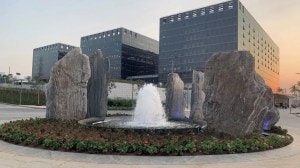By Sachin Bhalla
At COP27, climatologists presented troubling information: In only nine years, if global CO2 emissions continue at the current pace, the target of keeping global temperature rise to 1.5 degrees Celsius over industrial levels will no longer be feasible. Despite being a significant source of emissions, the energy sector finds it difficult to meet the rising demand for renewable energy. India’s reliance on imported fossil fuels increases the country’s fiscal burden. The supply-demand mismatch is made worse by geopolitical issues, and grid pressure is increased by the growth of the digital economy.
Data centers play a vital role in India’s efforts to reduce emissions and improve energy efficiency. These centers in India are currently expected to consume up to 5 gigawatts of power, raising concerns about their sustainability. It is crucial for data center owners and operators in India to prioritize energy efficiency and environmental sustainability. Recent reports have showcased that Indian businesses are aware of the potential of sustainability, and 62% of them say it’s not difficult to be both sustainable and profitable, indicating that the industry is still in its early stages of embracing sustainable practices.
Fortunately, there is a workable course of action. Businesses can achieve their sustainability goals and turn sustainability into a competitive advantage by creating a thorough action plan based on a holistic measuring framework and utilizing modern technology.
A holistic framework and bold action plan pave the way for sustainability
Energy usage represents just one aspect of measuring sustainability. To gain a competitive advantage through sustainability, data center operators should view energy consumption as part of a broader, comprehensive sustainability strategy.
Assessing the environmental impact of a data center involves evaluating greenhouse gas emissions, water usage, waste generation, land impact, and biodiversity. By implementing standardized metrics across these sustainability categories, data center operators can obtain a more comprehensive understanding of how their entire value chain affects the environment. State incentives are starting to shift the game as numerous regulatory organizations at the national level in India provide a framework for data centers. For data centers, several states have developed incentives like stamp duty exemptions, land and tax exemptions. This is giving data center users around the nation many new opportunities.
Once metrics are established, organizations can develop action plans to mitigate the environmental impact in these areas. This approach enables operators to minimize their negative environmental footprint while achieving operational efficiency. To support these efforts, employing state-of-the-art software tools for data ingestion and analysis is crucial for maintaining ongoing sustainability practices.
Software tools to simplify infrastructure management
Data centers are critical for India’s hybrid IT infrastructure. Effective monitoring and measuring of support systems like cooling and energy generation is vital. Software management systems are essential to assess performance, considering environmental sustainability, and achieve operational efficiencies to safeguard the entire IT ecosystem.
Platforms for data center infrastructure management (DCIM) are an effective option in India. They give operators the ability to manage the physical IT infrastructure, even across several sites, and model it. DCIM solutions offer a comprehensive perspective of data center operations by analyzing real-time data and delivering insights on device health and environmental effect.
In recent years, the use of AI in data center management becomes the potential to completely change how these facilities are planned, run, and maintained. The advantages of DCIM platforms are substantial. They make it easier to manage intricate hybrid IT architectures and give decision-makers the tools they need to boost efficiency and lessen their environmental impact. India can meet its sustainability targets by using DCIM systems to ensure the effective and long-lasting operation of its data centers.
Thoughtful resource stewardship creates competitive advantage
Organizations gain competitive advantage through effective resource management and sustainable practices. Employing software for sustainability action plans enhances efficiency, agility, and innovation, enabling a sustainable IT infrastructure for improved financial performance and positive environmental impact.
Operators must be diligent resource managers as India’s data center sector expands. They can develop into the attentive stewards the sector needs to thrive via rigorous planning and measurement. Energy efficiency is important because data centers account for 2% of India’s overall electricity consumption. To lessen their impact on the environment, operators should prioritize energy-efficient technologies, investigate renewable energy sources like solar power, and regularly optimize cooling systems. To genuinely attain Net Zero carbon emissions, they should also monitor their entire supply chain. Businesses in India can prosper economically while reducing environmental harm through responsible resource management.
The author is VP, secure power division, India and SAARC, Schneider Electric









